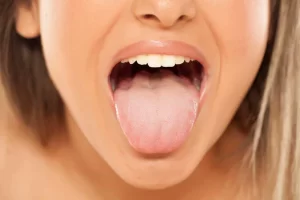The arrival of autumn marks the return to routine after a few months with many hours of light, pleasant weather and more free time than usual. This, together with the entry into force of the wintertime change and the worsening of the weather, can harm our mood and energy levels, giving rise to the so-called autumnal asthenia.
What is autumnal asthenia?
Autumnal asthenia consists of a state of tiredness, weakness and apathy that arises due to the difficulties the body has to adapt to seasonal changes, which in the case of autumnal asthenia include modifications of routines and schedules, fewer hours of light and drop in temperatures.
Although the symptoms of autumnal asthenia are not serious, they can affect our quality of life since it decreases our energy, motivation and performance in studies or work, and mood changes can worsen social and emotional relationships.
The good news is that these symptoms are temporary and gradually disappear as the body adjusts to the autumn changes. In addition, steps can be taken to prevent autumnal asthenia and quickly overcome symptoms once they appear.
What are the causes of autumnal asthenia?
With the entry into force of wintertime, it gets dark earlier in the afternoon, so the production of melatonin, a hormone involved in regulating the circadian cycle, is advanced. At the same time, the production of serotonin, a neurotransmitter is also known as the hormone of happiness, decreases. This causes an imbalance in the body, which adapts little by little to the new circumstances. To this, we must add the drop in temperature, the increase in rainfall and the arrival of flu and colds that weaken the immune system.
autumnal asthenia
As if this were not enough, COVID-19 has forced confinement and isolation that can worsen the depressive symptoms associated with autumn asthenia. Therefore, now more than ever, it is important to take measures to prevent it, such as following a balanced diet, making the most of daylight hours and exercising continuously.
What are the most common symptoms of autumnal asthenia?
The symptoms of autumnal asthenia are very diverse and usually disappear when the body adapts. This period is variable since it depends on each person. However, if symptoms persist, it is important to consult your doctor to assess other possible causes of discomfort.
Among the most frequent symptoms of autumnal asthenia are:
Tiredness.
Soft spot.
Drowsiness and trouble sleeping.
Apathy, lack of interest.
Changes in mood
Sadness.
Irritability.
Difficult to focus.
Lack or excess of appetite.
Decreased libidoAutumnal asthenia
This disorder is generally mild and short-lived, a few days or weeks, caused by poor adaptation to seasonal changes.
After enjoying the summer, autumn arrives and with it, the drop in temperatures, the rain, the time changes, the routine, the stress of work, the decrease in daylight hours. With all these changes, we can feel a strange and annoying sensation known as autumnal asthenia.
Asthenia is a symptom present in several disorders, characterized by a generalized feeling of tiredness, fatigue and physical and mental weakness, with the main incidence among people between 20 and 50 years old and a greater prevalence in women than in men.
Why does fall get us down? Because the hours of sunshine are reduced, and vital rhythms change, producing an internal imbalance. Sunlight is key in the production of certain hormones in the brain, such as melatonin. This hormone influences sleep, energy, hunger regulation or body temperature. At dusk, this gland reacts to low light levels and begins to be produced in greater amounts. When the hours of sunshine decrease, more melatonin is produced, which makes us feel more sleepy. This increase in melatonin generates a decrease in another hormone called serotonin or “mood hormone,” so we feel sadder.
This disorder is generally mild and short-lived, a few days or weeks, caused by poor adaptation to seasonal changes.
Symptoms
The symptoms it presents are physical and mental and include tiredness, general weakness, drowsiness, low mood, difficulty concentrating, and apathy and irritability. Lack of appetite decreased libido, and even a decrease in the body’s defences may also appear, so we are more prone to infections.
Possible treatments
Autumnal asthenia is not a disease or a syndrome despite all these symptoms since its effects disappear as the body adjusts to seasonal changes. As with many other health problems, the best treatment is prevention. To do this, there are a series of recommendations that can prevent the appearance of asthenia in autumn:
A balanced diet and healthy lifestyle habits allow the body to obtain the necessary nutrients to keep the body in perfect condition.
Practical tips
Try to eat a healthy and varied diet, respecting meal times as much as possible.
Keep fixed schedules to go to bed and get up and respect a minimum of hours of sleep.
Perform regular physical activity, primarily outdoors and during daylight hours. Moderate physical activity such as walking for an hour a day will lead to a healthy increase in physical fatigue, which will improve the conciliation of sleep.
Exposure to sunlight will reduce the presence of melatonin and increase serotonin, so the feeling of tiredness during the day will be less.
An intellectual activity that motivates and stimulates us. Doing simple tasks such as hobbies or reading stimulates knowledge and avoids negative ideas that accompany the sadness typical of autumn melancholy.
Progressively regulate schedules and activities to normalize and adapt them to work or academic hours.However, these recommendations may not be enough to help themselves with some vitamin and amino acid supplements for some people. Currently, various vitamin and amino acid supplements can be obtained in pharmacies that help us better cope with the symptoms of asthenia.
Food and products
Foods are rich in tryptophan. It is determined that to raise the mood, and you have to raise serotonin levels, also called the hormone of humour. To do this, you must consume tryptophan through your diet, an essential amino acid precursor of this hormone that acts as an antidepressant. You will find it in: nuts, pumpkin seeds, tofu, eggs, cheese, milk, fish and turkey or chicken meat. In addition, nuts are very rich in Vitamin B6 and magnesium, and their deficiency causes a lack of muscle tone. Also, its high contribution of essential fatty acids helps us improve mood and increases academic performance.
We are revitalizing supplements. During these days of "down," you may need supplements enriched with vitamins and amino acids or revitalizers such as royal jelly and ginseng.
Please take advantage of this season's food as they have the necessary nutrients for this time of year.
Vegetables and fruits
Cauliflower (cauliflower, Brussels sprouts) is rich in vitamin C and citric acid.
The artichoke and the eggplant favour the digestion of fats and detoxify the body.
Zucchini and pumpkin are rich in vitamins with antioxidant action and little energy. They indicated to purify the body.
Mushrooms are rich in vitamins and minerals, a high percentage of fibre and very low energy value.
Citrus fruits (oranges, mandarins) are rich in vitamin C, protecting, protecting our mucous membranes and preventingpreventing colds.
The pomegranate is a seasonal fruit with disinfectant action and contains citric acid that stimulates the action of vitamin C.
More energetic fruits to combat low temperatures such as quince, custard apple and grape.
















Add Comment